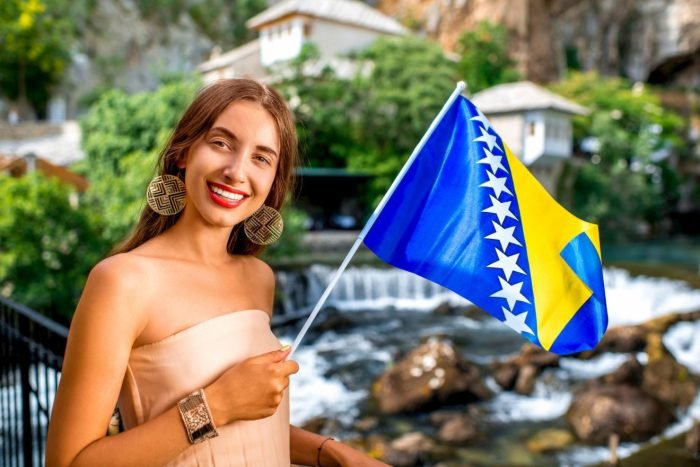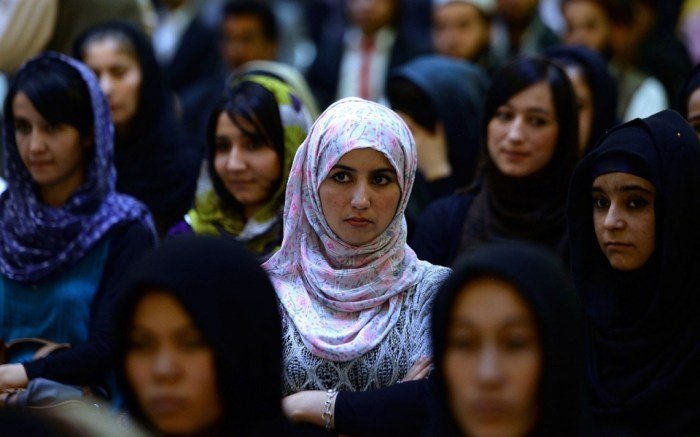Bosnian beauty, a captivating blend of history, culture, and contemporary trends, reveals a fascinating tapestry of perceptions and ideals. From the echoes of Ottoman rule to the influence of globalization, beauty standards in Bosnia have evolved over time, reflecting the nation’s rich heritage and diverse influences.
This exploration delves into the historical context of beauty standards, examining how they have been shaped by cultural shifts and artistic expressions. It explores contemporary ideals, the role of media and social media, and the cultural significance of beauty in Bosnian society.
The impact of globalization on beauty standards is analyzed, along with the complex relationship between beauty and identity in Bosnia. The discussion also encompasses the portrayal of beauty in art, literature, and music, highlighting the gendered aspects of beauty standards in Bosnia.
Historical Context of Beauty Standards

Beauty standards in Bosnia have evolved over centuries, reflecting the country’s rich and complex history. These standards have been shaped by various cultural influences, including indigenous traditions, Ottoman rule, and more recent Western trends.
Influence of Ottoman Rule
Ottoman rule, which lasted for nearly five centuries, significantly impacted Bosnian society and culture, including perceptions of beauty. The Ottoman Empire introduced new aesthetic ideals, particularly for women. The ideal of beauty during this period emphasized features like:
- Pale Skin:Pale skin was considered a sign of nobility and refinement, reflecting a life spent indoors, away from the sun’s harsh rays.
- Large, Expressive Eyes:Large, almond-shaped eyes were highly valued, often enhanced with kohl eyeliner.
- Full Lips:Full, sensual lips were considered a symbol of beauty and femininity.
- Long, Flowing Hair:Long, thick hair was seen as a sign of health and vitality. It was often styled elaborately with braids and adornments.
- Graceful Figure:A slender, graceful figure was ideal, often accentuated with clothing that emphasized the waistline and hips.
These beauty standards were often reflected in Ottoman-era art and literature. For example, the famous Bosnian poet, Musa Ćazim Ćatić, frequently described women with these attributes in his poems.
Contemporary Beauty Standards in Bosnia

Bosnia, like many other countries, is undergoing a transformation in its perception of beauty, influenced by a complex interplay of historical, cultural, and global factors. Contemporary beauty standards in Bosnia are shaped by a blend of traditional values, modern influences, and the ever-evolving landscape of social media and media representations.
Beauty Ideals in Bosnia
The prevailing beauty standards in Bosnia are a reflection of both historical and contemporary influences. While traditional notions of beauty emphasize feminine features, such as long hair, fair skin, and delicate features, modern trends have introduced a broader spectrum of aesthetics.
The influence of Western media and fashion has contributed to a growing acceptance of diverse body types, ethnicities, and personal styles. However, traditional ideals still hold sway in certain segments of society, particularly in rural areas and among older generations.
Comparison with Global Standards
Bosnian beauty standards share similarities with those found in other parts of the world, particularly in Europe. The emphasis on fair skin, slender figures, and well-groomed appearances is common across many cultures. However, there are also distinct differences. For instance, the importance of family and community in Bosnian culture often translates into a preference for more modest attire and a less overtly sexualized approach to beauty compared to some Western cultures.
Role of Media, Fashion, and Social Media
Media, fashion, and social media play a significant role in shaping beauty perceptions in Bosnia, as they do globally. Fashion magazines, television shows, and social media platforms often present idealized images of beauty, which can influence how individuals perceive themselves and their own appearance.
This can lead to both positive and negative consequences, as it can promote body positivity and self-acceptance while also contributing to unrealistic beauty standards and pressure to conform.
Cultural Significance of Beauty in Bosnia
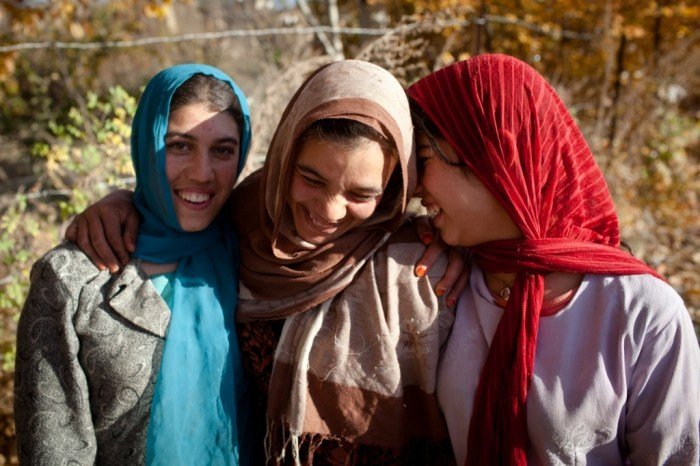
Beauty plays a significant role in Bosnian culture, influencing social interactions, relationships, and traditional celebrations. It is deeply intertwined with the country’s rich history, customs, and values.
Beauty’s Role in Bosnian Culture
The concept of beauty in Bosnia is multifaceted and extends beyond physical appearance. It encompasses inner qualities, such as kindness, compassion, and intelligence, as well as outward expressions of grace, elegance, and charm. This multifaceted understanding of beauty is reflected in various aspects of Bosnian life, including weddings, celebrations, and everyday interactions.
Weddings and Celebrations
- Weddings in Bosnia are elaborate affairs, often lasting for several days. The bride’s beauty is a central theme, with meticulous attention paid to her attire, makeup, and hair. Traditional Bosnian wedding dresses, known as “haljina,” are often adorned with intricate embroidery and delicate lace, symbolizing the bride’s purity and beauty.
The groom, too, is expected to be well-presented, showcasing his elegance and charm.
- Other celebrations, such as religious holidays and family gatherings, also offer opportunities for Bosnians to express their appreciation for beauty. These events are often characterized by vibrant colors, traditional music, and delicious food, all contributing to a festive atmosphere that celebrates life’s joys.
Bosnian beauty is known for its captivating blend of Mediterranean and Slavic features. From the striking blue eyes and dark hair to the warm smiles and graceful movements, it’s no wonder Bosnian women are often admired. This captivating beauty can be found in various aspects of life, including the vibrant cultural events and the stunning natural landscapes.
And for those seeking to maintain this natural beauty, the uark pat walker health center offers a range of services to help individuals achieve their health and wellness goals. Whether it’s through preventive care, fitness programs, or mental health support, the center provides resources to help people thrive and embrace their natural beauty from the inside out.
Everyday Life
- In everyday life, Bosnians value a well-groomed appearance. Men often wear tailored suits or traditional attire, while women take pride in their elegant dresses and scarves. This attention to personal style reflects a respect for oneself and others, contributing to a sense of community and social harmony.
- Beauty standards also play a role in courtship and relationships. Bosnian proverbs and sayings often emphasize the importance of physical attractiveness in finding a suitable partner. For example, the saying “ljepota je u oku gledatelja” (beauty is in the eye of the beholder) highlights the subjective nature of beauty while acknowledging its significance in interpersonal relationships.
Proverbs and Sayings
- The proverb “ljepota je u oku gledatelja” (beauty is in the eye of the beholder) emphasizes the subjective nature of beauty and suggests that different people may find different things beautiful.
- The saying “ljepotu ne treba tražiti, ona se sama nađe” (beauty does not need to be sought, it finds itself) implies that true beauty is inherent and cannot be forced.
- The phrase “ljepotu treba čuvati” (beauty should be cherished) suggests that beauty is a precious and valuable thing that should be treated with care and respect.
The Impact of Globalization on Beauty Standards
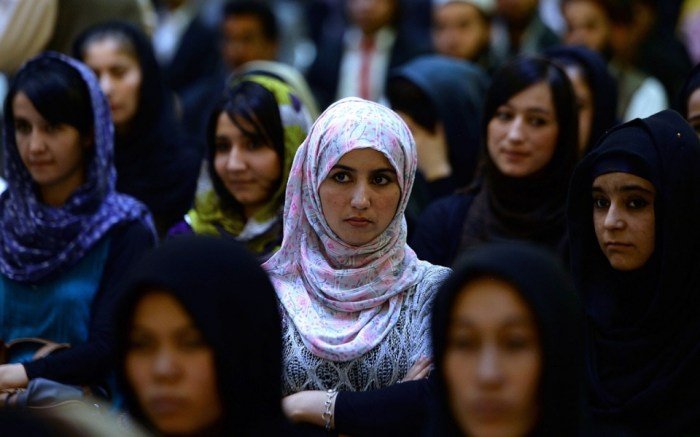
Globalization has had a profound impact on beauty standards in Bosnia, as it has in many other parts of the world. The increasing interconnectedness of cultures has led to the spread of Western beauty ideals, influencing perceptions of beauty and body image in Bosnian society.
The Influence of Western Beauty Ideals
Western beauty ideals, often portrayed in media and advertising, have become increasingly prevalent in Bosnia. These ideals often emphasize thinness, fair skin, and specific facial features. This influence has led to a growing pressure on Bosnian women to conform to these standards, which can have both positive and negative consequences.
Challenges and Benefits of Globalization on Beauty Standards
The influence of Western beauty ideals can present both challenges and benefits for Bosnian women.
Challenges
- Body Image Issues:The emphasis on thinness and specific physical features can contribute to body image issues and eating disorders among Bosnian women. The pressure to conform to Western beauty standards can lead to feelings of inadequacy and dissatisfaction with their own bodies.
- Loss of Cultural Identity:The dominance of Western beauty ideals can lead to a loss of cultural identity. Traditional Bosnian beauty standards, which may emphasize different features and values, can be marginalized.
- Commodification of Beauty:The globalization of beauty standards can lead to the commodification of beauty. The pursuit of Western ideals can become a source of profit for the beauty industry, which promotes products and services that promise to enhance physical appearance.
Benefits
- Increased Diversity:Globalization can also lead to greater diversity in beauty standards. Exposure to different cultures can broaden perceptions of beauty and challenge narrow definitions of what is considered attractive.
- Empowerment:For some women, the influence of Western beauty ideals can be empowering. They may feel more confident and liberated by embracing the freedom to express their individuality through their appearance.
- Access to Products and Services:Globalization has made a wider range of beauty products and services available in Bosnia. This can give women more options to enhance their appearance if they choose to do so.
Navigating Globalized Beauty Trends
Bosnian women navigate the complexities of globalized beauty trends in various ways. Some embrace Western beauty ideals, while others resist them and maintain traditional values.
Perspectives
- Adapting and Integrating:Some women adapt and integrate Western beauty ideals into their own cultural context. They may embrace certain aspects of Western beauty standards while maintaining their own cultural identity.
- Rejecting Western Ideals:Others reject Western beauty ideals and prioritize their own cultural values. They may embrace traditional Bosnian beauty standards or define beauty in terms of inner qualities and character.
- Celebrating Diversity:Increasingly, Bosnian women are celebrating diversity in beauty. They are embracing their unique features and challenging the notion that there is one universal standard of beauty.
Beauty and Identity in Bosnia
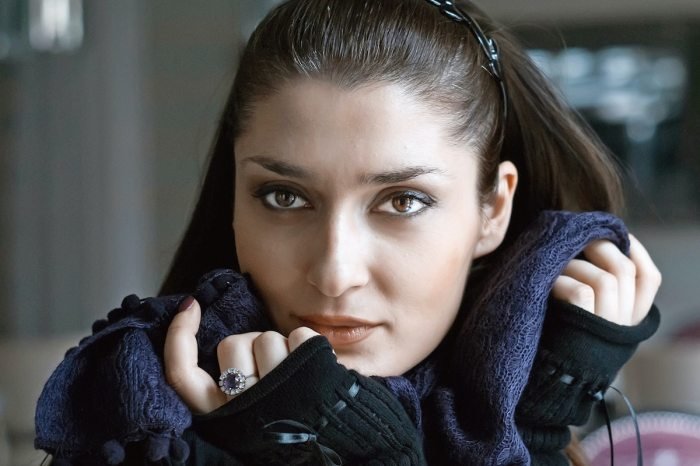
In Bosnia, beauty is intricately intertwined with personal identity, reflecting a complex interplay of cultural heritage, religious beliefs, and societal norms. Beauty serves as a powerful tool for self-expression, allowing individuals to showcase their cultural roots, religious affiliations, and personal values.
Beauty as a Reflection of Cultural Heritage
Bosnian beauty standards often draw inspiration from the country’s rich cultural heritage. Traditional clothing, hairstyles, and jewelry play a significant role in defining beauty. For example, the “Bosnian shawl,” a vibrant piece of fabric often worn by women, is a symbol of both cultural identity and beauty.
Bosnian beauty is renowned for its natural charm, often attributed to the country’s diverse landscapes and rich cultural heritage. To maintain this natural radiance, many Bosnian women are drawn to holistic health practices, such as those explored in the hone health review , which delves into the benefits of mindful living and natural remedies.
These practices not only enhance physical well-being but also contribute to the overall beauty that defines the Bosnian spirit.
It signifies the heritage and traditions of the region.
Beauty in Bosnian Art and Literature
Beauty, in its multifaceted forms, has long been a central theme in Bosnian art, literature, and music. From the intricate details of Ottoman-era architecture to the poignant verses of contemporary poets, the pursuit and expression of beauty permeates the cultural fabric of Bosnia.
This section explores the diverse ways in which beauty is depicted and celebrated in these artistic expressions.
Beauty in Bosnian Visual Arts
The visual arts in Bosnia offer a captivating lens through which to understand the country’s evolving perceptions of beauty.
- Ottoman Influence:During the Ottoman period, Bosnian art was heavily influenced by Islamic aesthetics, characterized by geometric patterns, intricate calligraphy, and vibrant colors. This period witnessed the construction of stunning mosques, such as the Gazi Husrev-beg Mosque in Sarajevo, which feature elaborate tilework, ornate domes, and minarets that reach for the heavens, embodying the beauty of Islamic architecture.
These architectural marvels served as centers of worship and community, reflecting the deep spiritual and aesthetic values of the time.
- Folk Art:Traditional Bosnian folk art, particularly textiles and embroidery, showcases the artistry and ingenuity of Bosnian women. The intricate patterns, often depicting floral motifs, geometric designs, and symbolic figures, represent a celebration of nature and the beauty of everyday life. These vibrant textiles, used for clothing, household items, and ceremonial purposes, are a testament to the skill and creativity of generations of Bosnian artisans.
Bosnian beauty is often characterized by its natural charm and captivating features. To maintain this beauty, many individuals seek out fitness options like those offered at acac fitness west chester. With a wide range of classes and equipment, this gym provides a supportive environment for achieving fitness goals and enhancing one’s natural beauty.
- Modern Art:In the 20th century, Bosnian artists embraced modern art movements, experimenting with new forms and techniques. The influence of European modernism is evident in the works of artists like Mersad Berber, whose paintings often feature bold colors, abstract forms, and a distinct sense of symbolism.
Berber’s art reflects the tumultuous history of Bosnia, exploring themes of war, loss, and the enduring spirit of the Bosnian people. The works of other prominent Bosnian artists, such as Safet Zec and Ismet Mujezinović, showcase the diversity of artistic styles and the ongoing evolution of beauty in contemporary Bosnian art.
Beauty in Bosnian Literature, Bosnian beauty
Bosnian literature, with its rich history and diverse voices, provides a profound exploration of beauty, both physical and internal.
- The Role of Nature:Nature plays a pivotal role in Bosnian literature, often serving as a source of inspiration and a reflection of the beauty of the country’s landscape. Authors like Ivo Andrić, winner of the Nobel Prize in Literature, use nature as a backdrop to explore the complexities of human emotions and relationships.
His novel “The Bridge on the Drina,” set in the picturesque town of Višegrad, beautifully captures the essence of Bosnian nature and its enduring influence on the human spirit.
- Themes of Love and Loss:Love, in its many forms, is a recurring theme in Bosnian literature, often intertwined with themes of loss and longing. The works of writers like Meša Selimović and Aleksandar Hemon explore the bittersweet nature of love, its capacity for both joy and sorrow.
Selimović’s novel “The Death of a Poet” poignantly depicts the loss of love and its lasting impact on the protagonist’s life.
- Social Commentary:Bosnian literature often serves as a platform for social commentary, using beauty as a tool to critique societal norms and injustices. The works of contemporary writers like Tanja Stupar Trifunović and Zoran Živković address issues such as gender inequality, political corruption, and the consequences of war.
These authors use their art to shed light on the complexities of Bosnian society and to advocate for a more just and equitable future.
Beauty in Bosnian Music
Bosnian music, with its diverse genres and captivating melodies, embodies the spirit and cultural heritage of the country.
- Traditional Folk Music:Traditional Bosnian folk music, known as “sevdah,” is a deeply emotional genre that celebrates love, longing, and the beauty of human connection. The melancholic melodies, often accompanied by instruments like the saz and the tambura, evoke a sense of nostalgia and reflect the rich cultural history of Bosnia.
Sevdah songs often tell stories of love and loss, expressing the complexities of human emotions with raw honesty and lyrical beauty.
- Modern Music:In recent decades, Bosnian musicians have embraced modern genres, incorporating elements of rock, pop, and electronic music into their work. Bands like Zabranjeno Pušenje and Dubioza Kolektiv have gained international recognition for their unique sound and socially conscious lyrics. Their music often addresses issues of social justice, political corruption, and the challenges faced by Bosnian society, using music as a platform for change and empowerment.
- The Role of Vocals:Vocal music plays a significant role in Bosnian musical traditions, with singers known for their powerful voices and expressive delivery. From the soulful melodies of sevdah to the energetic rhythms of modern pop music, the human voice is a central element in Bosnian music, conveying emotions and stories with depth and nuance.
The voices of renowned Bosnian singers, such as Hanka Paldum and Dino Merlin, have captivated audiences both within Bosnia and beyond, showcasing the country’s rich musical heritage and its ability to connect with listeners on a deeply emotional level.
Beauty and Gender in Bosnia

Bosnian society, like many others, has deeply ingrained gendered expectations surrounding beauty. These expectations shape how individuals perceive themselves and each other, influencing social interactions and personal choices. Examining these expectations sheds light on the complex interplay between gender, culture, and the pursuit of beauty in Bosnia.
Gendered Beauty Standards in Bosnia
Traditional beauty standards in Bosnia, influenced by a blend of Balkan, Ottoman, and European influences, have historically favored distinct characteristics for men and women. For women, emphasis has been placed on physical attributes associated with femininity, such as a slender figure, long hair, fair skin, and delicate features.
These standards often reflect ideals of domesticity, purity, and submissiveness. In contrast, men have been expected to embody strength, masculinity, and virility, often associated with physical prowess, a strong build, and a rugged appearance.
Impact of Gendered Beauty Standards
The impact of these expectations can be significant, shaping individual lives and social relationships in various ways. For women, the pressure to conform to these standards can lead to anxieties about body image, self-esteem issues, and a focus on physical appearance over other aspects of their identity.
This can also translate into social pressure to engage in practices like cosmetic surgery, excessive dieting, and the use of makeup, sometimes leading to unhealthy behaviors. For men, the pressure to conform to masculine ideals can lead to a sense of inadequacy or the suppression of emotions deemed “feminine.” This can also manifest in harmful behaviors like aggression, risk-taking, and a reluctance to seek help for emotional distress.
Contemporary Beauty Standards in Bosnia
Contemporary beauty standards in Bosnia are evolving under the influence of globalization and changing social norms. While traditional ideals still hold sway, there is growing acceptance of diversity and individual expression. This shift is evident in the increasing popularity of alternative fashion trends, the rise of social media influencers who challenge traditional beauty norms, and a greater focus on personal style and self-acceptance.
However, the influence of Western media and advertising continues to perpetuate idealized and often unattainable beauty standards, contributing to body image concerns and the pressure to conform.
Navigating Gendered Beauty Expectations
Navigating these expectations can be challenging, particularly for young people who are still forming their identities. It is crucial to foster critical thinking about the messages surrounding beauty, to challenge unrealistic ideals, and to promote body positivity and self-acceptance. This can involve engaging in open conversations about gender, beauty, and body image, encouraging diverse representation in media, and supporting individuals who are struggling with body image issues.
Final Review
By understanding the multifaceted nature of Bosnian beauty, we gain insights into the cultural fabric of this nation, the evolving perceptions of beauty, and the ways in which individuals navigate and express their identities within a globalized world. This exploration offers a glimpse into the captivating beauty of Bosnia, both in its physical expressions and the rich tapestry of its cultural values.
Q&A: Bosnian Beauty
What are some traditional Bosnian beauty practices?
Traditional Bosnian beauty practices often involved natural remedies, such as herbal treatments and skin care routines using ingredients like rosewater, honey, and olive oil.
How does the modern Bosnian woman view beauty?
Modern Bosnian women often embrace a blend of traditional values and contemporary trends, recognizing the importance of inner beauty, confidence, and self-expression.
What are some examples of Bosnian art and literature that explore themes of beauty?
Examples include the works of Ivo Andrić, a Nobel Prize-winning Bosnian writer, and the traditional Bosnian folk music known as “sevdah,” which often explores themes of love, beauty, and longing.
